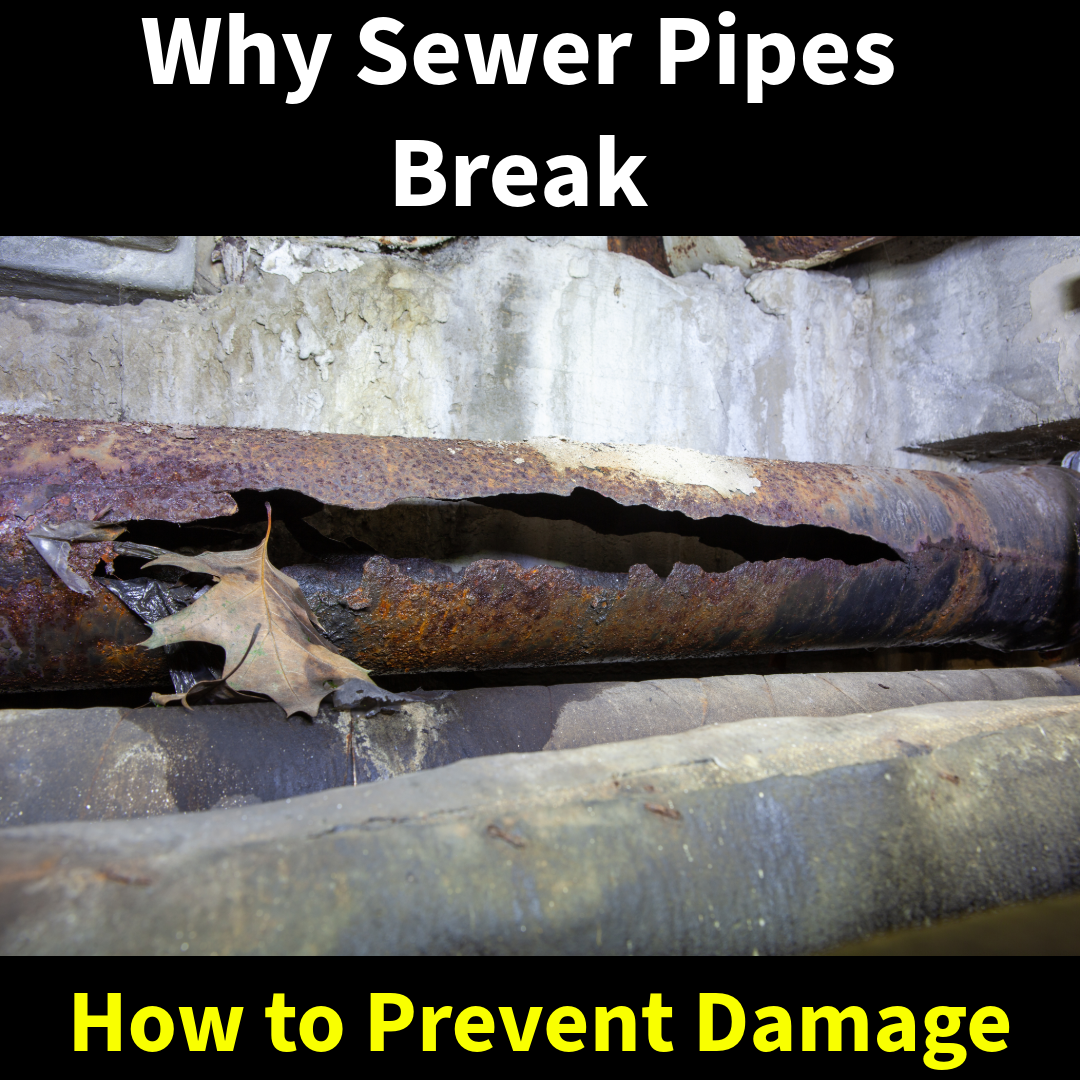Sewer pipes play a crucial role in our plumbing systems, transporting wastewater away from our homes and businesses. However, these underground pipes are not immune to damage. Cracks in sewer pipes can lead to significant problems, including leaks, blockages, and costly water damage restoration. In this blog, we’ll explore the main reasons why sewer pipes crack and what homeowners can do to prevent these issues.
Age and Wear
One of the most common reasons sewer pipes crack is simply due to age. Most sewer pipes have a lifespan of 50 to 100 years, depending on the material. Over time, natural wear and tear can weaken the pipe walls, making them more susceptible to cracking. Older pipes made from materials like clay or cast iron are particularly vulnerable.
Soil Movement
Soil movement is another significant factor that can lead to cracked sewer pipes. Changes in soil composition, settling, or erosion can put pressure on pipes, especially if they are installed too shallowly. Additionally, tree roots can grow into pipes, exerting pressure and causing cracks or blockages.
Improper Installation
If sewer pipes are not installed correctly, they can be prone to damage. Poorly aligned pipes, inadequate support, or improper backfilling can lead to stress and cracking over time. It’s crucial to have professional installation to ensure pipes are laid at the right depth and angle.
Extreme Weather Conditions
Extreme weather, such as heavy rain, freezing temperatures, and prolonged drought, can impact the integrity of sewer pipes. Heavy rain can saturate the soil, leading to erosion and shifting, while freezing temperatures can cause the ground to expand and contract, putting pressure on the pipes.
Corrosion
Certain materials, especially metal pipes, can corrode over time. Factors such as soil acidity, moisture, and chemical exposure can accelerate corrosion, weakening the pipe structure and leading to cracks. Regular inspections can help identify corrosion early and prevent further damage.
Blockages
Blockages caused by grease buildup, flushable wipes, foreign objects, or tree roots can increase pressure within sewer pipes, leading to cracks. When wastewater cannot flow freely, it creates stress on the pipe walls, which can ultimately result in damage.
Groundwater Pressure
In areas with high groundwater levels, the pressure from surrounding soil and water can impact sewer pipes. Excessive groundwater pressure can lead to cracks and even cause pipes to collapse if they are not designed to withstand such forces.
Consequences of Cracked Sewer Pipes
Cracked sewer pipes can lead to a range of issues, including:
- Leaks: Wastewater can leak into the surrounding soil, potentially contaminating groundwater and harming local ecosystems.
- Odors: Cracks can allow sewer gases to escape, leading to unpleasant odors inside and outside your home.
- Blockages: Cracks can attract debris and roots, leading to clogs that can back up the entire plumbing system.
- Costly Repairs: Sewer backups lead to black water floods which can be costly, and wreak havoc on your home, destroying personal contents and your structure. Always consult a water damage restoration specialist when dealing with sewer backups.
Preventive Measures
To minimize the risk of cracked sewer pipes, homeowners should consider the following preventive measures:
- Regular Inspections: Schedule periodic plumbing inspections to identify potential issues before they escalate.
- Proper Landscaping: Avoid planting trees or large shrubs near sewer lines, as roots can infiltrate and damage pipes.
- Maintain Drainage: Ensure proper drainage around your property to reduce soil movement and erosion.
- Avoid Chemical Drain Cleaners: These can corrode pipes over time, leading to weakened structures.
Understanding why sewer pipes crack is essential for every homeowner. By being aware of the causes and taking preventive measures, you can help ensure the longevity of your plumbing system and avoid the costly consequences of sewer pipe damage. If you suspect a problem with your sewer pipes, don’t hesitate to contact a professional plumber for an inspection and repair. If you have a sewer backup that has caused flooding, this type of loss should be handled by a water damage restoration professional, as the water itself is highly contaminated.

